







 Blog
Blog







To be fair, I don't know if you could even call this a 'blog'. I'll just write things here whenever I feel like it.
1) Random characters that I think are transgender
2) Words on Animal Crossing Villagers
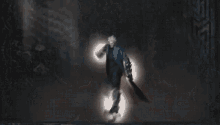

Written: 20/07/22
Just Dance is what I'd call a powerhouse of the Wii era. It's best known for having a million entries that all released on the Wii up until Just Dance 2020. In case you're too old or too young to have heard of it, you follow the routine of the dancer on screen either holding a Wii remote in the coloured hand or using the Kinect. There are guidelines to help you anticipate their next move in the bottom right. You gain points by following the routine at the exact time the dancer does. In later games, there's also your regular fair of unlockable avatars and sounds. In general, the series is a great time, especially for younger audiences or with friends.
The first game, aptly titled Just Dance is, however, exactly that: just dance. Unlike later games, it lacks multiplayer and anything else to do apart from try to get the high score at all the routines, apart from Challenges which I never really bothered with. Its greatest strength is in the tight routines, with personal favourites being "Ring My Bell", "Cotton Eye Joe", "Heart of Glass", "Hot N Cold", and countless other hit late-2000s songs.
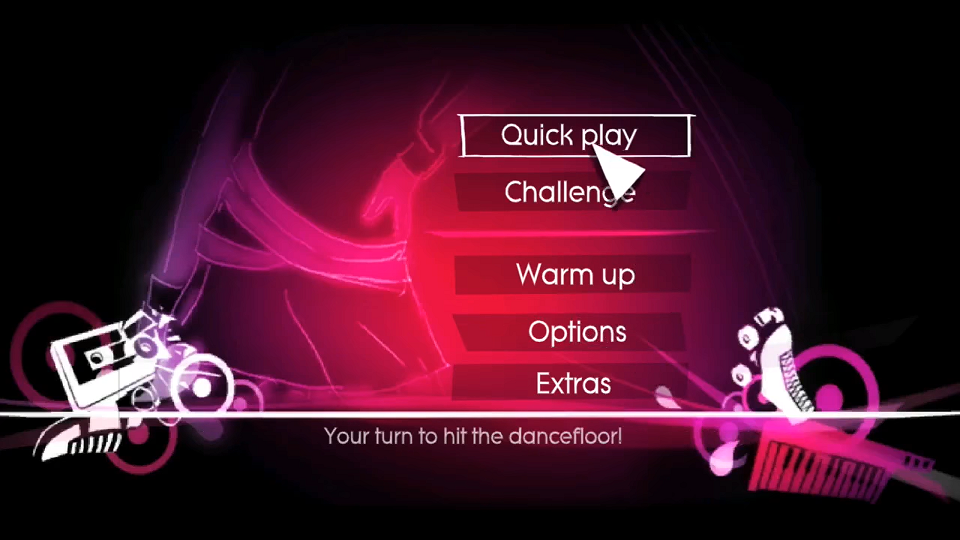
If this UI doesn't scream "2009 girl power", I don't know what does.
The major flaw with this entry is that the timing is, unfortunately, wack. It's very hard to hit a note even if you're obviously following the routine. That, and a lack of general polish, would be sorted out in later releases. Still, I think this one is worth going back to, even if not for long.
Just Dance 2 added multiplayer support and DLC (!!!) for the Wii, with far more tracks and added production value through more elaborate backgrounds and a cleaner UI, with iconic songs like "Rasputin" and "It's Raining Men", the routines for which are ingrained in my head, as well as "Gold" poses that would give players more points if hit at the same time. The games got gradually cleaner and more cohesive, losing the 2000s funk that the earliest games had. The other change that occured was that you could get 5 stars very, very easily on your first try.
The aim of Just Dance is said to be to let the player feel like they are actually dancing. Doing this by letting the player, well, actually dance was a smart move, especially when the series featured popular songs old and new that had fun choreographies. If you've played these routines as much as I have, however, you begin to lose a reason to play them more than twice or so unless they're very good. More entries keep being released with more songs by more new artists. This proble is in part aided by the Just Dance Unlimited service, which is a relatively cheap (~£30 for a year, which is enough to get you through all of the songs) subscription service which allows you to play nearly all routines from past games either on your PC or a supported copy of Just Dance XYZ.
Obviously, I approve of this move, particularly in the price point. Yes, it's streamed, but Just Dance is one of the few games that actually makes sense to stream. When you get down to it, it's a video streamed to you that you have to wiggle a controller in time with. Though that's a problem - after all, "winning" doesn't necessitate "dancing", as you can win by simply shaking the Wii remote/equivalent - it allows a "lighter" way of playing the game, so to speak. It also means that if you don't feel like digging out the old Wii or Xbox, you can just look up 99% of the routines online and play along for a practically equivalent experience.
My main problem with the Just Dance series as of late is that it has everything to offer casuals and newcomers, but nothing to offer more enthusiastic or "hardcore" fan. I, personally, ended up graduating to harder music games like Stepmania/DDR, but there's something those sorts of games lack: feeling like you're actually dancing, and the ability to have a bit of "leeway" to add your own style to it.
So what are the alternatives for a true "dancing game"?
There's Dancerush. There's also "Dance Evolution", which is dead but more Just Dance-like, using the Kinect in a similar fashion but having a different music selection and requiring more precise moves (for the most part). There's also ParaParaParadise, which uses your hands, seems fun and retro but is Japan-exclusive. It's a lot of effort to get a similar, better experience, and maybe that's why Just Dance is so popular. But effortless comes at a cost.
Written: 29/06/22
Yeah, fuck you, I'm writing another review before I finished the previous one. I've yet to finish Rez, but have finished the main game of The Outer Worlds.
(intro)
The blurb of The Outer Worlds is that it's an immersive sim/open world RPG. A common comparison would be to something like Fallout New Vegas, which Obsidian also worked on. It is so common, in fact, that comparisons to these games are what has fueled most of the criticism online that I've seen thus far. Personally, I find that reductive and uninteresting.
Gameplay-wise, it's what you'd pretty much expect from any game of its type. Skills, perks, choices to make and so on. While I wouldn't say it evolves on the open-world formula in leaps and bounds, there are many welcome changes. Ammo, for example, is streamlined into just "heavy", "light", and "energy", as opposed to the frankly redundant 9001 ammo types found in other similar games. I've heard complaints about the gunplay, but in my opinion, the guns feel nice to use and there's good enough variety. There's various damage types to play around with, like plasma damage which absolutely incinerates fleshier enemies. Additionally, there's even super specific Science weapons like the Shrink Ray which actually does shrink enemies.
Most of the usual fare: lockpicking, sneaking, hacking, and so on is done well enough. The lockpicking is "Deus Ex" style, where it takes a certain amount of time to lockpick the less skill you have, and so you risk enemies catching you. This is much preferred to minigames or anything silly like that. Everything, in other words, is as it should be or a bit better.
My main complaint is the lack of perks. A few are interesting, such as one that grants you health on kills, or one that lets you revive downed companions every so often. Mostly, however, they're just stat bonuses which is a damn shame. I would have welcomed a "confirmed bachelor" or "wild wasteland" very much. The Outer Worlds can get silly with it sometimes, but never truly wacky. I suppose if you enjoy a more serious experience it's fine, but then again, these perks can also add immersion. There's also no option to be a cannibal, even in the cannibal quest. That is an outrage.
More of a nitpick, but the enemy AI is a little silly for a game released in 2019. Enemies typically just run straight at you or your companions, making no attempt to dodge or use cover. They only run away very, very occasionally if they're extremely low on health, at which point they're as good as dead. The power scaling of enemies isn't fantastic either. It's not a huge bother, but at various points enemies become suddenly tanky for a short amount of time before you get the next mark up of weapons. It gets a bit silly to think someone's head could survive that many bullet wounds. I wouldn't say this is too noticeable as you're playing, but it signifies a little bit of a lack of polish.
Okay, well, whatever. The gameplay is pretty good, but the story is the main focus of these sorts of games. I'd say it does a very good job of that as well. Folks can call the political message of the game hamfisted and contrived; while it is very on-the-nose and pretty impossible to agree with the "baddies" (where other games have provided more nuance than "they'll pay me better, probably"), it's a fine message and it's what sci-fi stories have been doing since the 60s.
The highlight of the story, for me, is the worldbuilding. For all that this is a strange universe ruled by corporations that have expectations which don't make any sense, it all still feels somehow lived in. Towns fall into disarray when abandoned, and these abandoned settlements give you a real feeling that life out here is both a struggle and liable to change at the whims of a corporation. Out in space, what are you even supposed to do? Sometimes, there's only one settlement nearby. There's only one choice, and that is compliance; it depicts the resigned mentality of the Halcyon settlers perfectly.
Furthermore, the companions are mostly good. Well, the ones that I like, I think are very good. Vicar Max has my favourite quest - it greatly changes his character, explains the really interesting relgious movements of Halcyon, and you get to do drugs. He's also a grumpy old man who can be occasionally soft, so obviously I love him. Parvati would be next for me - her quest is about love and very sweet. She's a bit socially awkward, which results in many funny reactions during dialog. Parvati and Max also have good banter, being from the same settlement, Edgewater. Companion banter is one of my favourite additions. I don't think it's particularly new, but they're always creative and give incentive to have the less interesting companions around.
SAM would be my next favourite. He's a janitor robot with a radioactive green gooey nozzle weapon, so basically there's nothing not to love. Unfortunately, he doesn't get his own real companion quest, which makes me very sad. He also has his own funny robotic witticisms - roboticisms? - that never fail to enrich emotionally significant moments. Beneath him would be Felix. I don't find him too interesting, but he's a little naive and also the resident anarchist, so I respect that. Nyoka comes after that - she's meant to be the cool tough one, but I both don't really buy it and find her kiiiiiind of annoying. Finally, there's Ellie, who's whole thing is that she's kind of an asshole who doesn't like owing people stuff and who also has rich parent guilt. Yikers.
Fortunately, all my opinions on companions are subjective, and they're all pretty different so there's something for everyone. A couple more relevant characters include ADA, your sassy yet clinical ship AI lady (always awesome) and Phineas Welles, the guy who resurrected you who people on Tumblr are apparently horny for. Don't ask me. He looks like Rick from Rick and Morty. Overall, the significant characters are almost all charming or interesting to talk to, and treated with care. They all have their own rooms on your ship, and they fill up with items they like when you loot them from around Halcyon.
My only complaint with the story is that it just feels like it peters out towards the end. The "twist" isn't particularly surprising. It only confirms the evilness of the villains, which I feel isn't what a twist is supposed to do. It's meant to either illuminate their intentions, enriching them, or to just surprise the audience. The main "villain" is also one you also only meet once beforehand in a Zoom call. If you fail to talk her down, the final boss is just... something you could fight anywhere else in the game in a big arena with occasionally respawning enemies. Bioshock much?
The fizzling out also kind of extends to the planets, as well. Edgewater is done very well, especially for a tutorial level as it actually provides you with a choice that has drawbacks and benefits. Groundbreaker is done extremely well, especially for a "hub" world of sorts, and it even has a lot of interesting NPCs like the Spacer's Choice moon helmet guy. Monarch is... well, I dunno. It's built up as this lethal place, but most of its dangers (raptidons, mantiqueens) are easily avoided and later easily killed. The terrain itself looks pretty similar to Terra 2. I kind of just wish it was more inhospitable. Its conflict is also interesting and relatively nuanced, but I kind of mostly didn't care. I dunno.
Then there's Byzantium. It's pretty much the capital of Halcyon, and I get what they were going for. It's certainly grander than anywhere else. For a city, however, the exploreable area feels really small. It has some crazy stuff like the Retirement District, but it just doesn't feel... grand enough. It needs taller buildings, more open shops. I understand the point is that everyone on Halcyon is doing shit, even the really rich, but it doesn't really hammer home that the rich are exploiting the poor when the rich have less buildings open in town than Edgewater does after it's lost power.
Finally, the last planet of the game, Tartarus, a high-security prison, is anything but. I've neglected to mention the Holographic Shroud until now, but basically it lets you disguise yourself as an enemy faction in restricted areas. If you're caught, you can talk your way out of it 3 times, after which your shroud "resets" and you can walk around some more until it runs out. If you have the correct one in Tartarus, the whole place basically becomes a joke and you can clear the dungeon in about 15 minutes with even a mediocre sneak skill. This is because the amount of times you can debate your way out of being caught resets EVERY TIME you exit the area altogether. This is plain silly. It's a silly concept in general, especially since it isn't used or needed all too often. Furthermore, launching into Tartarus locks you into the save sequence and you can't go back to do anything else, discouraging exploration in a place that should be interesting and should have interesting people to talk to (prisoners, guards, etc.), for a lackluster end sequence and a slideshow ending. Boo.
Overall, though, again, the story is very good and puts a lot of interesting thoughts on the table. Aesthetically, I (personally) think this game also shines. The environments are really pretty, even if occasionally repetitive. The faces actually look human even if they're not super-well animated. The companions have particular care put into them, and Parvati is probably the nicest-looking one. Creatures are designed uniquely and well, and the advertising placed in loading screens is fun worldbuilding and also just looks plain good. I do lament the lack of hairstyles, in particular. It would really help with making characters feel a bit more individual. The OST also isn't really anything to write home about, aside from the main theme which is really good. There's no radio, which is a shame, considering there's a whole quest about a radio tower. But whatever.
The Outer Worlds, is, for me, an 8/10 game characteristic of being the first entry in a series. It's a Bioshock type experience, except a bit more derivative than that game was (and in a good way!). It refines an experience you know well and wanted more of, while also doing its own thing and looking good while doing it.
Why I'd pick it up:
Written: 10/06/22
It's been almost a year since one of these. Well, closer to about six months. In that time, I've become greatly interested in the PS2's library of games, and have bought a slim silver PS2 for myself.
I originally got seriously interested in its library after buying a handful of OPS2 (Official UK Playstation Magazine) and combing through the reviews there. The first game isn't the one I saw spoken about there, however. It was found by doing something as simple as searching "PS2 FPS Games" on Google. So yeah, I won't say it's all THAT obscure. Considering how quickly games disappear out of the public consciousness, however, and how I haven't personally seen this game being talked about outside of the PS2 subreddit, I'm going to give it a review. Perhaps you might be convinced to give it a go, too! (Oh, also, mild spoilers, but... they are old games.)
The first game I'll be looking at is Darkwatch. You play as Jericho Cross, a western-style gunslinger in a train robbery that went horribly wrong. Cassidy Sharp, a Darkwatch agent, tries to stop you - but treasure is just too much of a lure for Cross. Lazarus, who was imprisoned in the train's vault, winds up escaping and cursing you to become a vampire. It's up to you to find him, investigate the mysterious Darkwatch, and maybe even cure yourself along the way.
At first glance, this western/supernatural combo is the kind of mad-libs stuff you'd get out of the first stages in Game Dev Tycoon. Each genre has its chance to shine - the supernatural elements show through the "powers" you get as you increase your good or bad karma in these "excellent" (corny) stills, where my favourite riff in any game ever plays. Every. Single. Time.
It's honestly staggering the amount of different ways they attempt to express saving someone versus sucking all their blood for your own powers. These powers can vary from the Good Silver Bullet (that powers up your bullets temporarily) to the Evil Blood Frenzy, that soups up your melee attacks. The problem with this arises, however, in the realisation that the evil powers are objectively better than the good ones. The "armour" power for the evil route, for example, both armours you and damages enemies that attack you, while the equivalent for the good route only gives you armour.
You also have a vampiric "double jump" (which makes floaty combat very fun and also lets the devs justify putting some... worse enemies in), a regenerating shield. When you kill an enemy, you can also take their blood to increase your base health.
However, being a vampire naturally comes with a few weaknesses. You're sensitive to sunlight, and will lose all of your powers when out of the shadows. Lazarus also "tempts" you with the most comical supervillain shit I have ever seen. It's worth playing the game just to hear the silly dialogue, to be honest.
The "western" part of the game shines mostly through its setting and inner core of the gameplay. It's a remarkably good early-ish FPS. Though the aiming certainly takes some getting used to, it is fortunately not a necessity. Your melee attack, combined with your ludicrously maneuverably double jump, allows you to take encounters in almost any way you like.
Darkwatch, first and foremost, is a game about style. It embodies the 2005 FPS. It has moral choices that matter and supernatural power-ups that actually affect gameplay that Bioshock later perfected. The UI, the design of the Darkwatch organisation as a whole, the guns, everything embodies a despairing world under the attack of strange forces. If you enjoy earlier FPSes, or vampires & vampire games in general, you are nearly guaranteed to enjoy this underrated, genre-defying game.
So, what's the catch?
Again, the gunplay is a major problem. Even on maximum sensitivity it's impossible to swivel around to an enemy behind you quickly. The sensitivity in the "middle" is, conversely, too great, and it makes weapons like the sniper rifle a chore to use. It's one of those games where you have to use everything at your disposal to make it. Unfortunately, it also results in the later levels being snore-fests of spending about 5 minutes attempting to snipe far away enemies to avoid dying.
There are also a few annoying enemies. There are some I really love - the Oozers have an excellent design more fit for a proper horror/zombie game. Vipers are also fun to fight against with their erratic teleportation and fast speed that keeps you on your toes without being frustrating. Then there's the Banshees.
Banshees are flying enemies. If there are no elevated platforms to jump off, they are usually above you. They have a projectile attack and an attack where, if somewhat close to you, they may or may not slap you a little bit. You may think "not a problem! Snipe them from a distance, or just plug a shotgun shell in their face when they're close." Wrong.
If you want to snipe them, you have to wait for a window during which their projectile attack finishes, since if you shoot them during it you'll just destroy the projectile no matter how hard you try to aim for her head. If you want to do a close-range attack, good luck! Since their typical position is very high above you, they never deliberately get close to seek you out. In the meantime, there may be another Banshee also shooting projectiles at you, or a wave of enemies to take care of. It's a game of waiting. A lot of waiting. And it stinks, because the rest of the game is so fluid and fun.
One bad enemy is a relatively minor complaint on its own. Unfortunately, I consider the final set of bosses to be essentially the Banshees but worse.
The first fake-out boss, Lazarus, has a terrible fight. You are on a long stretch of road. He is flying, and shoots projectiles at you. There are also minor enemies that he spawns. Unfortunately, he has too much health. Period. It is impossible to get up close to him and use any of the more damaging weapons (e.g. shotgun) and so you're forced to essentially follow him and use as many rifle shots as you can. Nevermind the fact that you may run out of ammo. Snore.
The final two bosses have the same problem, except a bit better because it requires more strategy than "shoot and try not to fall asleep at the controller". Again, they're flying, and again, they move a lot and are irritating to keep track of. This time, you actually get health throughout the fight, and the projectiles are harder to avoid. Except for this green fucking cloud.
This cloud saps all of your shield. Instantly. Then it drains your regular health. When this attack is activated, you are liable to having not a lot of health from the rest of the fight. This means that touching it basically = instant death, especially since you get no health/stat upgrades at all throughout the game.
So I had to look it up to even finish the game. There are little yellow particles in the cloud. THESE, apparently, are what actually damage you. What you have to do is wait until the last possible second, then double jump as far to the left/right as you possibly can to get out of range of these projectiles. Granted, this is an interesting strategy that is exciting, but also, these boss fights simply spam too many instant-killing attacks in lieu of interesting mechanics.
The endings are also stupid. Point-blank. In the Good ending, your vampirism is cured, and the "good" girl (Cassidy Sharp) just turns into an angel and flies off. Decidedly lame. In the Bad ending, you get too much power for your own good. The hunger overwhelms you and you drink & kill Tala, the "bad" girl. In neither ending does the gunslinger get the girl, or get a satisfying conclusion.
(Especially considering its bizarre marketing campaign, in which the two leading ladies starred in Playboy back when people apparently thought this was sexy.)
If you can stomach a bad end stretch and hiccups of its time for a stylish, genuinely fun, impressive and decidedly unique adventure, then this game is definitely for you. Anyone enjoying plain old camp, a dark/gothic aesthetic and vampires in general will also enjoy this game. It's one of those titles that deserves a remake but has long since been forgotten. A title well worth the try, even in 2022.
Written: 16/11/21
The culture around Animal Crossing villagers has, at the time of writing, quite frankly gotten very bizarre. Villagers being bought and sold for millions of bells - or indeed, not at all. Some time ago, I caved, trying to buy Raymond - but there were no offers whatsoever. The speculative villager market of villagers with supposed worths that you cannot actually trade in for money is a topic for another time, however. En lieu of villagers having worth from the experiences in your game, worth now must be attached to their appearance and style alone. In spite of this, if you ask any person, they often still have a bizarre or not contemporarily "popular" villager as their favourite.
That's why this list is written in the way it is - a small attempt for me to reflect my experience with the series as a whole, and show what people originally loved about the old games.
Number one: Peanut

Peanut is a peppy villager that's been around since the very first game. Like a lot of peppy villagers, her indoor style is marked by a childish, almost Barbie-like set of furniture, with the typical girly charm found in many villagers of her personality type.
I first met her in City Folk. She was my first ever favourite villager - in particular, due to her big, anime-like eyes, a kind of character I was obsessed with at that age. Unfortunately, she ended up moving away.
(ERROR560, was in fact, not a real error, and instead a joke I thought was incredibly funny. For interest's sake, apparently error 560 means you're trying to access a connection with a password/key provided during development. Maybe Peanut was trying to communicate with the player, but lost that ability long ago.)
For some reason, though, I've always taken villagers moving away as a personal choice on their part, that I try not to intervene in too much. In retrospect, it was probably for the best. I haven't touched that game in a long time, and she would have been erased in one of the many times I reset my town.
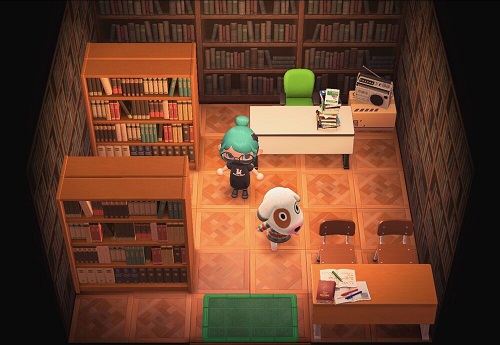

(Bones, neutered.)
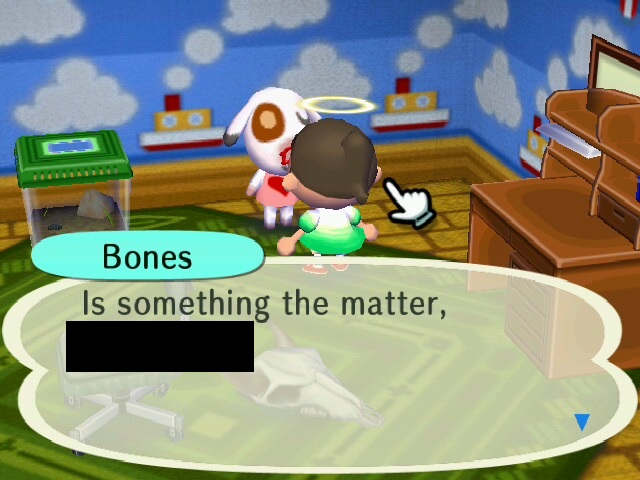
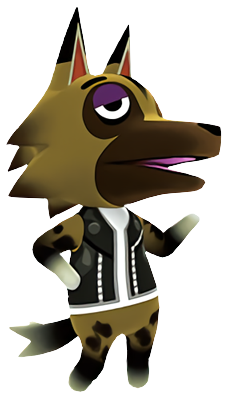
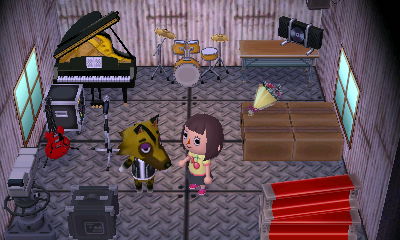
Damn, bitch, you live like this?




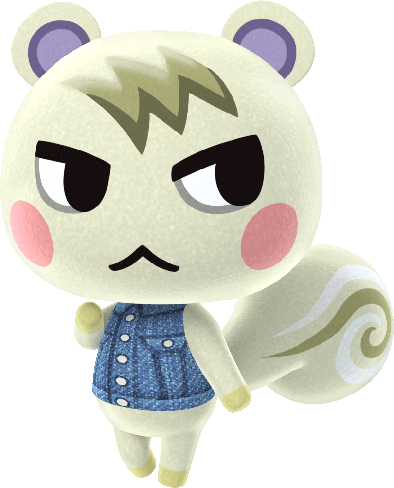
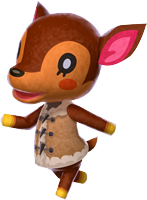
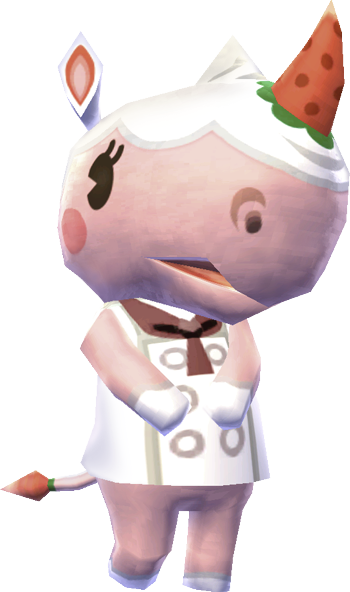
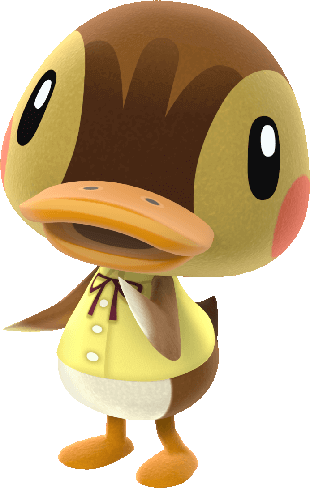



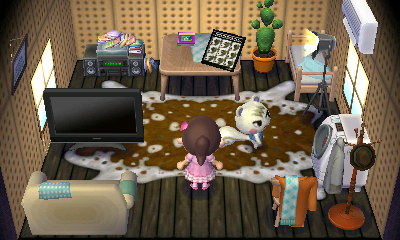

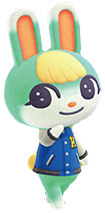
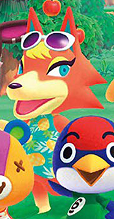


Written: 15/02/21
Okay, let's be real. Nobody asked for my opinion on this. Nobody *will* ask for my opinion on this. Here it is anyway.
Number one: Dirk Strider (Homestuck)
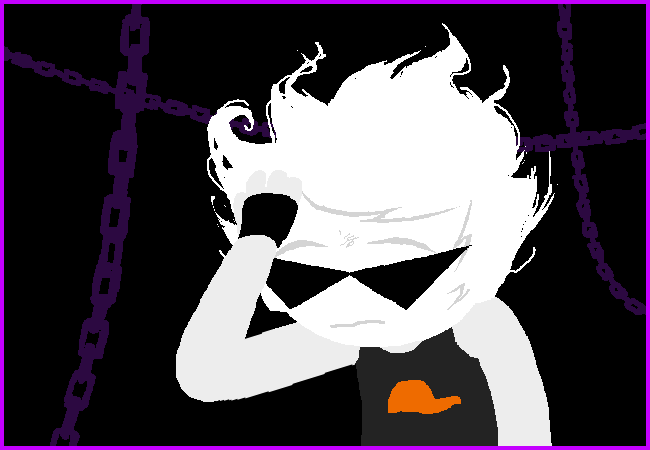
I don't know. You take a look at this man LITERALLY wrapped up in splinters of himself and is also an absolute mess and DON'T immediately assume he's transgender?
Just look at him. ._. Looking ass. I bet he had a fuckboy phase. Like, you know those phases some trans dudes have? Maybe I'm the only one that noticed this,
but it happens sometimes. I don't know whether I *personally* like it or dislike it, but it sure is a thing.
Number two: Terra (Birth By Sleep)

Me: Your Terra GNC af
Aqua & Ven: YOU'RE INSANE
In all seriousness, I don't know I just think he has vibes. Especially the eyelashes. Prettyboy energy. Actually, maybe I just sort of think he's gay...
but he can be gay and trans too. Becoming a disembodied statue form thing is also a major dysphoria mood. Relate. #Boyboss
Number three: Vergil (Devil May Cry)

Hear me out here. His voice, the way his voice actor plays it, has *vibes*. I also think he's really cool and sexy. Please marry me. If you want, it can also follow that
he got top surgery from demon magic or whatever, so...